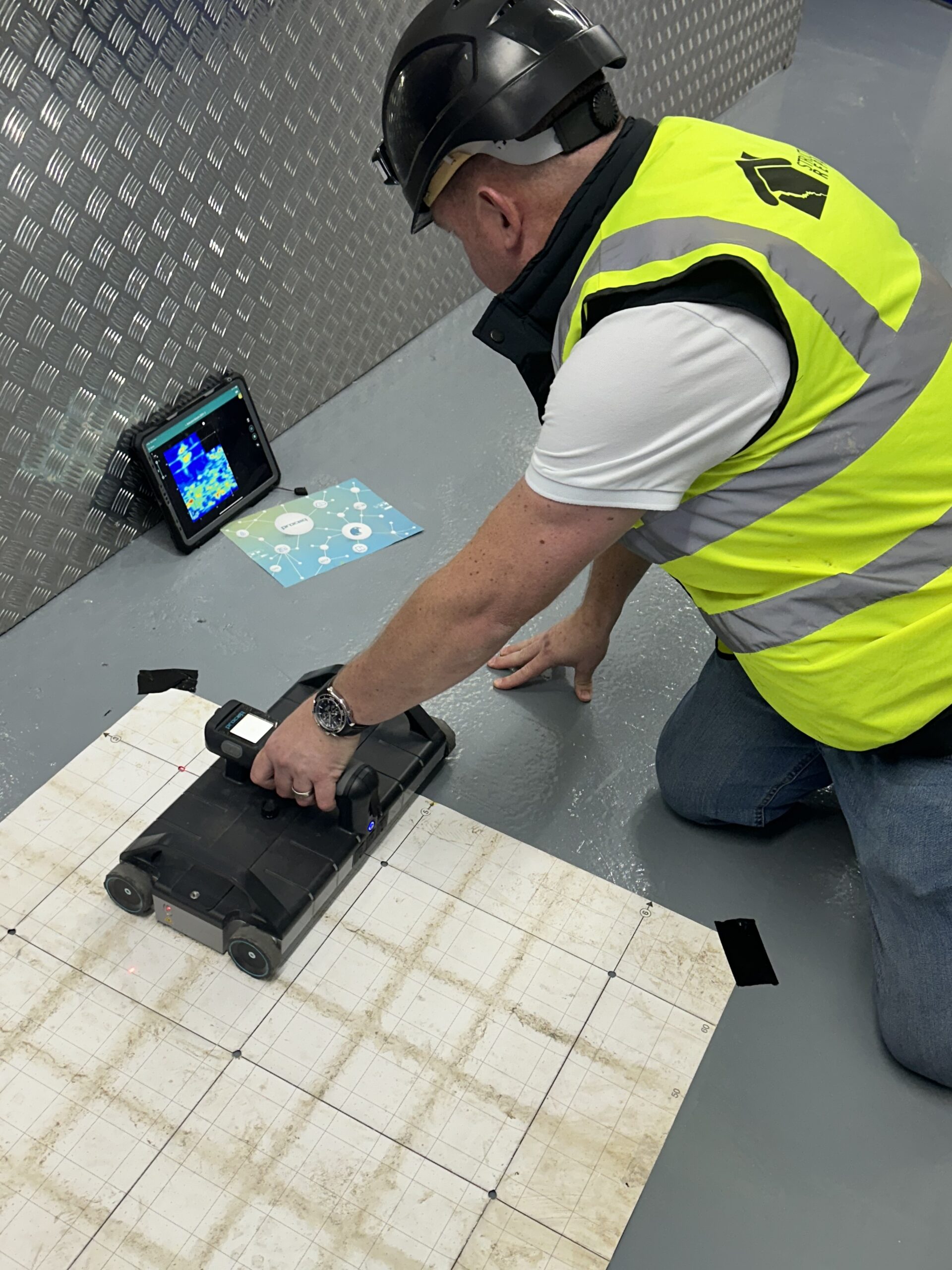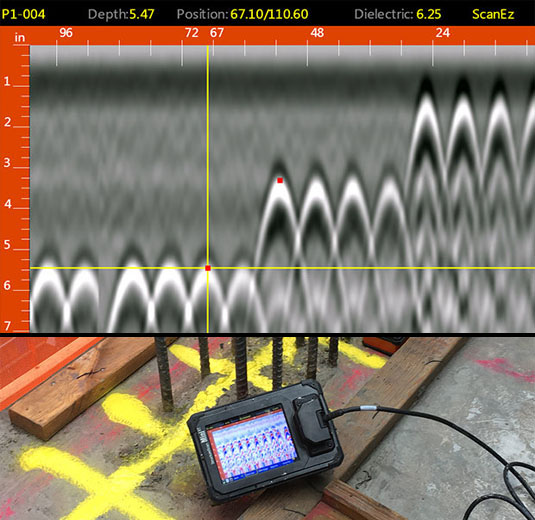Checking Out the Depths: A Comprehensive Guide to Concrete Scanning and Its Diverse Applications
In the world of building and infrastructure growth, the meticulous process of concrete scanning holds a crucial role in guaranteeing the structural integrity and security of tasks. As modern technology remains to develop, the applications of concrete scanning have broadened far past plain surface-level evaluations. From discovering rebar and post-tension cables to drawing up spaces and avenues hidden within concrete structures, the capabilities of contemporary scanning strategies are both essential and remarkable. However, real depth of concrete scanning's possible reaches even additionally, branching right into unexpected sectors and stimulating ingenious remedies. The interconnected internet of possibilities that concrete scanning presents is not just remarkable but likewise critical for the improvement of various industries.
Significance of Concrete Scanning
Understanding the relevance of concrete scanning is crucial in making certain the safety and security and stability of frameworks throughout building and remodelling jobs. Concrete scanning makes use of advanced technologies such as ground-penetrating radar (GPR) and electromagnetic induction to spot ingrained items, spaces, or other abnormalities within concrete structures - RainierGPR Concrete Scanning. By conducting complete scans prior to exploration, cutting, or coring right into concrete, building groups can stay clear of unexpected damage to essential structural aspects like rebar, channels, or post-tension cable televisions. This proactive strategy not only prevents costly repair work and job hold-ups however likewise improves total building safety and security by minimizing the danger of structural failures or collapses because of compromised honesty.
In addition, concrete scanning plays a critical role in making sure conformity with building regulations and regulations that mandate the protection of existing architectural elements throughout construction activities. By properly drawing up the inner composition of concrete, scanning modern technologies allow building and construction professionals to make educated choices that maintain the structural security and sturdiness of structures and facilities tasks. Essentially, the significance of concrete scanning hinges on its capacity to guard both the structural integrity and the personnel associated with building ventures.
Technologies Used in Concrete Scanning
Concrete scanning depends on innovative innovations such as ground-penetrating radar (GPR) and electro-magnetic induction to precisely detect embedded items and abnormalities within concrete structures. Ground-penetrating radar operates by sending out high-frequency electromagnetic waves into the concrete. When these waves run into various products or voids within the concrete, they get better to the surface, allowing the GPR system to create a detailed subsurface photo. This innovation is specifically effective in locating rebar, post-tension cable televisions, avenues, and various other objects embedded in concrete.
Electromagnetic induction, on the various other hand, functions by creating electromagnetic fields around a concrete framework via a transmitter coil. When metal objects exist within the concrete, they interfere with these electro-magnetic areas, causing eddy currents to move via the steel. By determining the modifications in the electromagnetic fields with a receiver coil, the system can identify the place of metallic items in the concrete.
These cutting-edge innovations play a vital function in non-destructive screening, guaranteeing the safety and integrity of concrete frameworks in various industries.
Applications in Construction Market
Within the building and construction sector, concrete scanning innovation discovers varied applications that improve project efficiency and safety and security. One key application is the detection of rebar, post-tension cords, and various other embedded things before drilling or reducing right into concrete structures. By properly drawing up these elements, building groups can stay clear of pricey problems, ensure structural honesty, and stop possible safety hazards. Additionally, concrete scanning is used for finding gaps, such as air pockets or locations of wear and tear within concrete, which can jeopardize the general stamina of a structure. By determining these gaps early on, building and construction experts can take needed measures to resolve them and preserve the sturdiness of the structure. In addition, concrete scanning plays an important function in quality assurance by confirming the density of concrete covers over support, ensuring compliance with style requirements and requirements. Overall, the applications of concrete scanning in the construction market contribute substantially to streamlining project workflows, lowering risks, and providing premium outcomes.

Security Advantages of Concrete Scanning
In the realm of building safety and security, the implementation of concrete scanning modern technology presents a critical benefit in preemptively identifying potential dangers and strengthening structural stability. By using innovative scanning methods such as ground-penetrating radar (GPR) and electromagnetic induction, building and construction groups can accurately situate rebar, post-tension cables, conduits, and various other hidden things within concrete frameworks. This aggressive strategy significantly decreases the danger of unintended strikes during drilling, cutting, or coring activities, thus stopping expensive problems, injuries, and task hold-ups.
In addition, concrete scanning enhances employee safety and security by providing real-time information about the structural condition of concrete elements. index This information enables construction professionals to assess the integrity of existing structures, identify deterioration or problems, and make informed choices regarding repair and maintenance treatments. By resolving possible security worries immediately, concrete scanning adds to creating a secure workplace and minimizing the probability of structural failures or crashes on building sites. Ultimately, the safety and security advantages of concrete scanning not only safeguard possessions and lives but also promote market standards for top quality and dependability.
Future Patterns in Concrete Scanning
Arising advancements in scanning modern technology are poised to change the field of concrete examination and analysis. One significant fad that is acquiring grip is the integration of expert system (AI) and artificial intelligence algorithms right into concrete scanning tools. By utilizing the power of AI, these systems can examine vast amounts of information accumulated during scanning processes to supply even more accurate and in-depth insights into the problem of concrete frameworks. This can help in finding surprise defects, anticipating prospective architectural failings, and also recommending maintenance techniques.
Another considerable pattern is the growth of more straightforward and mobile scanning gadgets. Miniaturization of scanning devices permits much easier accessibility to restricted areas and remote locations, making evaluations more comprehensive and reliable. In addition, innovations in cordless communication technologies enable real-time information transfer and evaluation, assisting in quicker decision-making processes.
Furthermore, there is a growing concentrate on sustainability in concrete scanning modern technologies - RainierGPR Concrete Scanning. Makers are significantly integrating environment-friendly materials and energy-efficient attributes right into their gadgets to decrease environmental influence. These future patterns are established to boost the effectiveness, accuracy, and sustainability of concrete scanning techniques, forming the sector's future landscape
Conclusion
To conclude, concrete scanning plays an essential duty in the building industry by making sure the safety and performance of different tasks. By using advanced technologies, such as GPR and radar imaging, experts are able to properly spot potential dangers within concrete structures. The applications of concrete scanning are you could try these out substantial and remain to evolve, making it a crucial device for maintaining the stability of buildings and facilities. As technology breakthroughs, the future of concrete scanning holds encouraging advancements for boosting construction processes.
